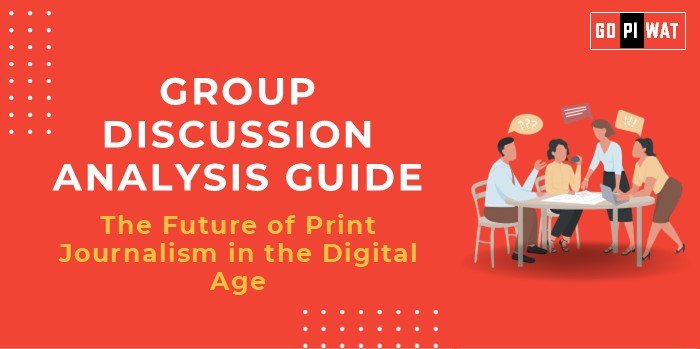📋 The Future of Print Journalism in the Digital Age
🌐 Introduction
Print journalism, once the cornerstone of news dissemination, now faces significant challenges in the digital era. The rapid rise of online platforms has transformed how audiences consume news, compelling traditional print media to adapt or risk obsolescence. This evolution impacts media organizations, journalists, advertisers, and readers worldwide.
📊 Quick Facts and Key Statistics
- 📉 Decline in Print Circulation: In the United States, daily newspaper circulation has decreased from 55.8 million in 2000 to 24.2 million in 2020, reflecting a significant shift toward digital news consumption.
- 💻 Digital News Consumption: A 2023 report indicates that 75% of news consumers access news online, underscoring the dominance of digital platforms.
- 💰 Advertising Revenue Shift: Digital advertising spending reached $600 billion in 2023, with a declining share allocated to print media.
- 📰 Print Media Resilience: Certain niche publications, such as The Wall Street Journal, have maintained stable readership by focusing on quality journalism and adapting to digital trends.
👥 Stakeholders and Their Roles
- Media Organizations: Adapting strategies to embrace digital platforms, focusing on digital subscriptions, and exploring new revenue models.
- Advertisers: Shifting investments toward digital channels, impacting traditional media revenue streams.
- Readers: Changing consumption habits favoring digital and mobile formats for real-time information.
- Government Bodies: Regulating media practices and supporting public interest journalism through policies and funding.
- Journalists: Evolving storytelling techniques to suit digital formats and navigating new content dynamics in a rapidly changing media landscape.
🏆 Achievements and Challenges
Achievements
- 📈 Digital Transformation: Major newspapers like The New York Times have successfully transitioned to digital subscriptions, achieving significant growth in digital readership.
- 🗞️ Niche Market Success: Specialized print publications, such as The Spectator, continue to sustain loyal readers by focusing on quality content and targeted audiences.
- 🌍 Global Reach: Digital journalism has expanded the reach of news organizations, allowing them to engage with a global audience in real-time.
⚠️ Challenges
- 📉 Revenue Decline: Traditional print media face declining advertising revenues as advertisers prefer digital platforms with broader reach and targeted advertising capabilities.
- ❗ Credibility Concerns: The proliferation of misinformation and fake news on digital platforms has eroded public trust in media, posing challenges for both print and digital journalism.
- 📉 Sustainability of Quality Journalism: Reduced funding impacts investigative journalism and local news coverage, raising concerns about the future of in-depth reporting.
🌍 Global Comparisons
United States and United Kingdom: These countries lead in digital transformation, with higher digital readership compared to print.
Japan: Despite global trends, Japan maintains significant print readership due to cultural preferences and the perceived credibility of print media.
🗨️ Structured Arguments for Discussion
- Supporting Stance: “Despite digital trends, print journalism serves a critical audience segment that values in-depth analysis and credibility.”
- Opposing Stance: “The shift to digital news is inevitable, as readers demand instant access and broader content variety that print cannot offer.”
- Balanced Perspective: “Print journalism’s survival depends on niche markets, quality content, and reader loyalty, while mainstream news adapts to digital formats.”
💡 Effective Discussion Approaches
- Opening Approaches:
- 📊 Statistical Impact: “With digital ad revenue surging past $600 billion, print media faces a steep decline.”
- 📚 Contrast Opening: “While digital media thrives, specialized print publications still attract a loyal readership.”
- Counter-Argument Handling:
- 📰 Example: “In response to declining print sales, some newspapers have innovated with unique print editions and partnerships, maintaining a loyal reader base.”
🔍 Strategic Analysis (SWOT)
- Strengths: Brand loyalty, perceived credibility, and archival value of print.
- Weaknesses: Declining readership, high production costs, and lower ad revenue.
- Opportunities: Specialized content, partnership models, and premium print editions.
- Threats: Digital proliferation, reader habit shifts, and the sustainability of advertising revenue.
🎓 Connecting with B-School Applications
- Real-World Applications: Topics in marketing and media studies can explore sustainable business models for traditional media.
- Sample Interview Questions:
- 🗨️ “How can print journalism compete with digital platforms for reader attention?”
- 🗨️ “What are effective monetization strategies for traditional media in the digital age?”
- Insights for B-School Students: Understanding digital transition strategies, analyzing consumer trends, and studying the implications of content credibility.


